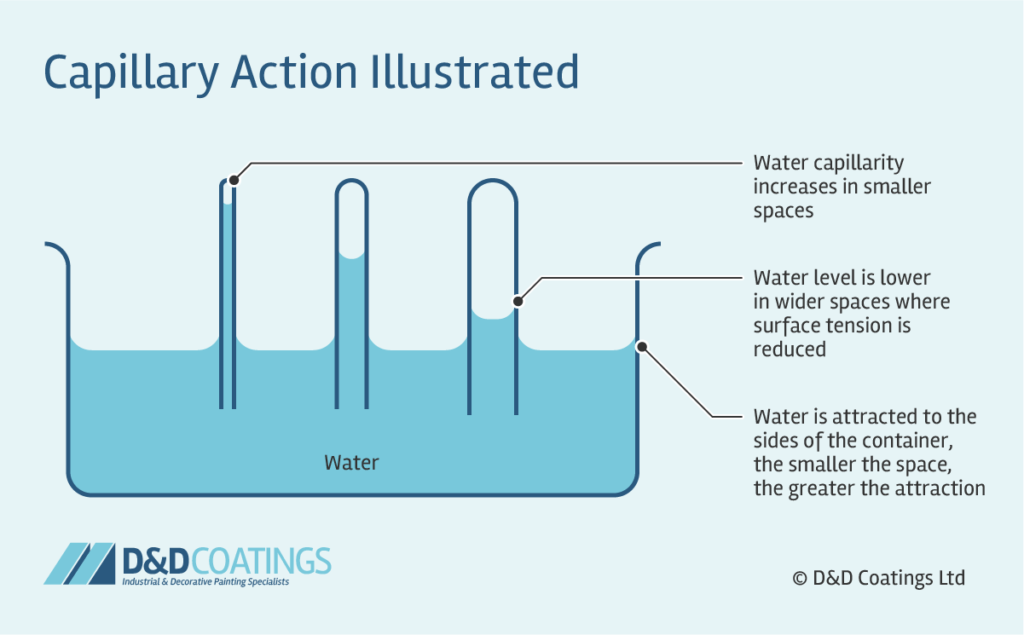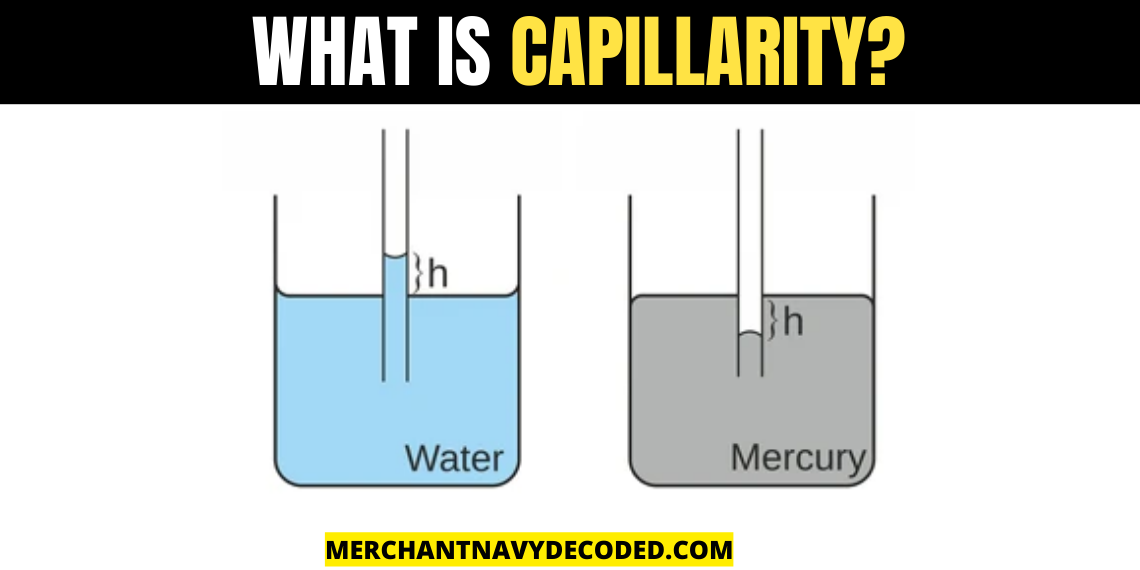What is Capillarity? Used of capillarity effect
Definition: Capillarity is the ability of a liquid to flow in narrow spaces without any assistance and in opposition to external forces like gravity.

From the figure you can see that water is flowing upwards and against the force of gravity. This is happening due to the capillarity effect, the adhesive force of the glass tube is trying to lift the water molecules but the cohesive forces of the water molecules are not letting it happen to cause surface tension. Water can only be lifted to a certain amount of height until the surface tension has the ability to hold the weight of the water lifted.
If the area is more in the tube then less amount of water will be lifted and if the area is less in the tube then more amount of water is lifted.


If there is mercury in the case of water in the beaker then mercury will not lift up to the height of water because of a higher cohesive force of mercury than water.

What are the uses of Capillarity?
Uses of capillarity effect on day to day basis:
- Sweeping the wet floor with the help of a towel, the towel will soak all the water from the floor because of the capillarity effect. The towel has small pores in it through which water seeps in.

2. Plant uses capillary action to bring up the water through the root and send it through the stem and brunches.

Note:
If you want to learn more about this topic, we suggest checking out our Combo package with the given link https://www.merchantnavydecoded.com/courses/c/ . It’s a great way to dive deeper into the subject through video explanations. This package covers all the important details and presents them in an easy-to-understand format. Watching the videos will help you grasp the topic better and make learning more enjoyable. So, we highly recommend giving our Combo package a try to enhance your knowledge on the subject.
Disclaimer :- The opinions expressed in this article belong solely to the author and may not necessarily reflect those of Merchant Navy Decoded. We cannot guarantee the accuracy of the information provided and disclaim any responsibility for it. Data and visuals used are sourced from publicly available information and may not be authenticated by any regulatory body. Reviews and comments appearing on our blogs represent the opinions of individuals and do not necessarily reflect the views of Merchant Navy Decoded. We are not responsible for any loss or damage resulting from reliance on these reviews or comments.
Reproduction, copying, sharing, or use of the article or images in any form is strictly prohibited without prior permission from both the author and Merchant Navy Decoded.


